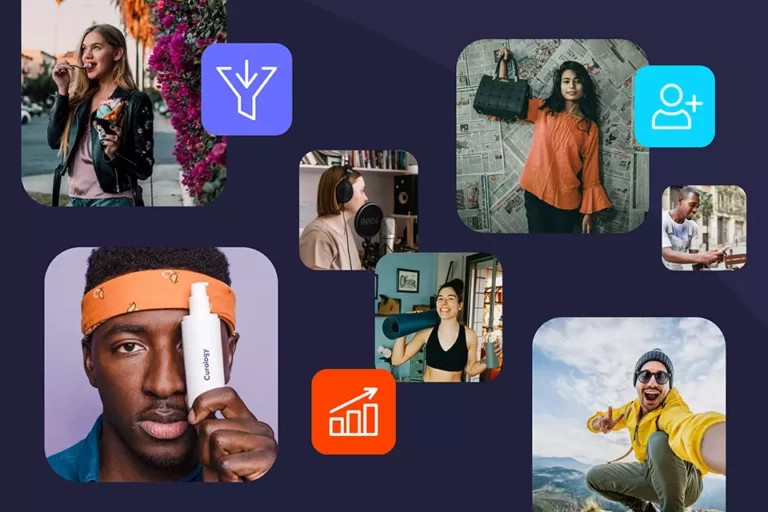Walking the Line: Navigating Influencer Marketing in the Deinfluencing Era

In today’s digital age, influencer marketing is a powerful tool for brands to connect with their target audience. The rise of social media has given birth to a new breed of content creators known as influencers, who have the ability to sway consumer behavior and shape brand perceptions. However, in a world where the deinfluencing movement is gaining momentum, brands must tread carefully to strike a balance between leveraging influencer marketing and ensuring authentic, meaningful partnerships.
The Power of Influencer Marketing:
It’s no secret that influencer marketing is a highly effective paid strategy for brands, and it’s easy to see why! Collaborating with influencers allows brands to gain access to the creator’s likeliness, on top of their engaged and loyal followers who trust their genuine, authentic recommendations and opinions. This, in turn, creates a unique opportunity to reach a targeted audience in an organic and relatable manner, fostering brand awareness, credibility, and ultimately, driving sales.
Choosing the Right Influencers:
Now more than ever, it’s crucial for brands to select the right influencers to partner with! Follower counts and reach is no longer the standard for selecting creators for campaigns. Instead, brands have begun to prioritize authenticity, engagement, alignment of values, and audience relevance. The key lies in finding influencers whose content and personal brand naturally resonate with the brand’s core identity, values, and target audience.
Authenticity – The Cornerstone of Successful Partnerships:
Authenticity should be at the forefront of every brand and influencer collaboration! It breeds trust and consumers can easily tell when an influencer’s endorsement feels disingenuous or inauthentic. Therefore, in order to maintain credibility, brands should focus on creating long-term relationships with influencers who truly align with their values and offerings. Not only will this strengthen the brand/influencer connection, but it will also foster a sense of loyalty toward the brand among the influencer’s target audience.
Transparency in Sponsored Content:
In an era where transparency is highly valued, brands must embrace openness and ensure transparent communication in influencer partnerships. Consumers expect influencers to be upfront with them when it comes to paid promotions, which is why disclosing sponsored content is so crucial to keeping the influencer/consumer relationship in a positive space. This allows consumers to differentiate between general recommendations and promotional material.
While it is an unspoken rule that influencers should only take on partnerships with brands that they regularly utilize and love, some influencers can be bought with a high price tag for content creation. Therefore, it is crucial for influencers to clearly disclose sponsored content, allowing their audience to distinguish between true non-promotional recommendations and promotional ones. Transparency with their audience will only help to solidify trust and credibility, all while reinforcing the authenticity of the brand/influencer collaboration.
The Deinfluencing Movement – Adapting to Changing Consumer Behaviors:
Now that we’ve established some ground rules on influencer marketing as a whole, let’s hone in on deinfluencing. So, what is the Deinfluencing Movement and why did it happen? In a nutshell, some creators have started to share “overhyped” products with the masses in the hopes to save their audiences time and money. Deinfluencing is meant to prevent consumers from disingenuous recommendations from creators looking to cash a huge paycheck.
This presents a new challenge for brands as consumers are becoming more cognizant of influencer marketing tactics, demanding greater authenticity and transparency from the creators they work with. It has also sparked a bigger conversation about overconsumption. So, instead of impulse purchasing, deinfluencing motivates consumers to think long and hard before committing to a purchase.
According to a GWI report, the number of consumers searching for products on social media has risen by 43% since 2015. If you think about it – no matter where you are, you’re constantly being told what products to buy, who you should follow, and what you should wear. Influencer recommendations continue to skyrocket as the years go on, which is why it’s more important now than ever for brands to only partner with influencers that truly love their products and offerings. In order to thrive in this new landscape, brands must align their marketing strategies with the deinfluencing movement in mind. For example, engaging with micro-influencers and placing an emphasis on value and experience can only help move your brand forward.
Engaging Micro-Influencers:
Micro-influencers (10k to 100k) typically have a smaller following, but highly engaged audiences, offering a compelling alternative in the age of deinfluencing. Their dedication to authenticity and reliability strongly resonates with their audiences, resulting in higher engagement rates and a strong sense of community. One way that brands can leverage micro-influencers is by utilizing them to reach niche markets and cultivate a genuine connection with their audience.
Emphasizing Value and Experience:
To stay relevant amid the deinfluencing movement, brands should focus on providing value and memorable experiences to their audience. By creating products and services that truly meet consumer needs and desires, brands can build loyalty and a positive reputation. Moreover, fostering engaging experiences, such as interactive campaigns or collaborations with influencers who embody the brand experience, can create a lasting impression on consumers.
Striking the Balance:
The key to walking the line between influencer marketing and the deinfluencing movement lies in finding a harmonious balance. Influencer marketing remains a valuable strategy for brands to leverage, but it must be done authentically and transparently. By carefully selecting influencers who genuinely align with the brand’s values and ensuring transparency in sponsored content, brands can foster trust and authenticity, ultimately resonating with consumers.
Walking The Line:
Influencer marketing continues to be a powerful tactic for brands to connect with their target audience, but in the era of the deinfluencing movement, authenticity and transparency are non-negotiable. By selecting the right influencers who align with the brand’s values and fostering long-term partnerships, brands can create genuine connections with their audience, establishing trust and credibility.
Consumer behaviors will continue to evolve, which means that brands will need to adapt their influencer marketing strategies to meet the demands of the deinfluencing movement. Engaging micro-influencers and prioritizing value and experiences can help brands resonate with their audience on a deeper level, fostering loyalty and long-term relationships.
Walking the line between influencer marketing and the deinfluencing movement requires a delicate balance. It’s essential for brands to continuously evaluate their influencer partnerships, ensuring they remain authentic, transparent, and aligned with the evolving consumer landscape. By embracing the principles of the deinfluencing movement and prioritizing genuine connections, brands can navigate the influencer marketing landscape successfully, fostering trust and loyalty among their target audience. This, in turn, will help brands to build meaningful connections, drive engagement, and ultimately, achieve long-term success in the ever-changing digital landscape.






![Supplier-Diverse-logo[80] Supplier-Diverse-logo[80]](https://hoffmannmurtaugh.com/wp-content/uploads/elementor/thumbs/Supplier-Diverse-logo80-q1aarjz0bfmhzi7ttv7rocd5wxiwta6bizbjwmiync.png)